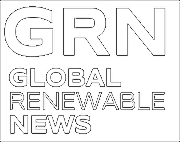One of the biggest challenges facing the San Diego region and California is how to decarbonize key economic sectors over the next two decades, while also helping to ensure electric reliability, affordability and equity. A study released today (April 5) by San Diego Gas & Electric offers recommendations designed to help meet the monumental challenge of achieving California's goal of carbon neutrality by 2045 - removing as much carbon emissions from the atmosphere as the state produces.
While other studies have been published on how to decarbonize California's economy through electrification of sectors such as transportation and buildings, SDG&E's study, "The Path to Net Zero: A Decarbonization Roadmap for California," also incorporates for the first time the utility industry standard for reliability using industry-specific planning tools to chart what we believe to be an achievable approach. The industry standard considers an electric system to be reliable if it experiences only one power outage every ten years due to the probability of energy demand exceeding supply. Conducted with technical support from the Boston Consulting Group, Black & Veatch and UC San Diego Professor David G. Victor, the study concluded that a diversified decarbonization approach is necessary: a combination of clean electricity, clean fuels (such as renewable natural gas and clean hydrogen) and carbon removal.
"Accelerated electrification of transportation and other sectors is essential to California and our region's sustainability. It is also incredibly important that California takes electric reliability into consideration and doesn't leave anyone behind when developing a decarbonization roadmap," said SDG&E CEO Caroline Winn. "Given the scale of the transformation required to achieve California's ambitious goals, collaboration across many sectors will be critical. SDG&E alone cannot implement the decarbonization Roadmap, but we are committed to helping enable an equitable, safe, reliable and affordable energy transition, and that includes investments in electric vehicle charging infrastructure, grid modernization and emerging innovations like long-duration, hydrogen-based energy storage."
Victor, co-director of UCSD's Deep Decarbonization Initiative, served as the study's advisor and echoed one of its key findings. "While the exact combination of technologies and investments needed to get to net zero is unknown at this time, what is certain today is that a flexible and diversified approach to decarbonization is both prudent and necessary to help ensure we are eliminating carbon emissions while also safeguarding grid reliability," he said. Victor also noted that decarbonization, done well, could actually lower the fraction of the California economy that is spent on energy services while also providing leadership on global strategies to cut emissions.
"The state's clean energy industry is ready to lead the way on decarbonization and deliver solutions that benefit our environment, local communities and the economy," said Jason Anderson, president and CEO of Cleantech San Diego. "SDG&E's analysis helps shine a light on the importance of policy collaboration and the need to rapidly scale a broad set of innovative energy technologies to reach California's climate goals."
"As an advocate for a just and equitable energy transition, I believe we all need to work together to accelerate the pace of decarbonization and bring everyone along," said County Chair Nathan Fletcher. "We need to provide support for low-income and working households while the region moves towards adoption of clean technologies, such as electric vehicles and electric appliances."
Takeaways from the Study
- California is estimated to need to decarbonize at 4.5 times the pace over the past decade to reach its carbon neutrality goal and mitigate the negative impacts of climate change.
- Electric generation capacity is estimated to need to increase to about four times the capacity that existed in 2020, in order to support transportation and building electrification. Between 2020 and 2045, electric consumption is expected to increase by 96%.
- To keep electric service reliable, California will need to complement its growing portfolio of intermittent solar and wind generation with a mix of clean, firm and flexible resources that can be dispatched at any time to meet needs. Installing 40 GW of new battery storage, as well as 20 GW of dispatchable generation from 100% clean hydrogen combustion by 2045 is projected as necessary to meet this goal. According to the California Independent System Operator, the statewide grid has interconnected about 2,600 MW of energy storage as of January 2022, but no electric generation from 100% clean hydrogen combustion.
- It is estimated that by 2045, there will be demand for 6.5 million metric tons of clean hydrogen across the economy, 80% of which is projected to be used to enhance the reliability of the electric supply.
- The implementation of the Roadmap requires regulatory and political support from four fronts to: 1) prioritize electric sector reliability; 2) maintain affordability and enhance equity; 3) incentivize innovation and adaptability; 4) and enable the deployment of decarbonization infrastructure.
To help accelerate the energy transition, SDG&E will share this study widely with key stakeholders to stimulate conversations and cross-sector collaboration.
SDG&E is an innovative San Diego-based energy company that provides clean, safe and reliable energy to better the lives of the people it serves in San Diego and southern Orange counties. The company is committed to creating a sustainable future by providing its electricity from renewable sources; modernizing natural gas pipelines; accelerating the adoption of electric vehicles; supporting numerous non-profit partners; and, investing in innovative technologies to ensure the reliable operation of the region's infrastructure for generations to come. SDG&E is a subsidiary of Sempra (NYSE: SRE). For more information, visit SDGEnews.com or connect with SDG&E on Twitter (@SDGE), Instagram (@SDGE) and Facebook.
This press release contains statements that constitute forward-looking statements within the meaning of the Private Securities Litigation Reform Act of 1995. Forward-looking statements are based on assumptions with respect to the future, involve risks and uncertainties, and are not guarantees. Future results may differ materially from those expressed in any forward-looking statements. These forward-looking statements represent our estimates and assumptions only as of the date of this press release. We assume no obligation to update or revise any forward-looking statement as a result of new information, future events or other factors.
In this press release, forward-looking statements can be identified by words such as "believes," "expects," "intends," "anticipates," "plans," "estimates," "projects," "forecasts," "should," "could," "would," "will," "confident," "may," "can," "potential," "possible," "proposed," "in process," "under construction," "in development," "opportunity," "target," "outlook," "maintain," "continue," "goal," "aim," "commit," or similar expressions, or when we discuss our guidance, priorities, strategy, goals, vision, mission, opportunities, projections, intentions or expectations.
Factors, among others, that could cause actual results and events to differ materially from those described in any forward-looking statements include risks and uncertainties relating to: California wildfires, including the risks that we may be found liable for damages regardless of fault and that we may not be able to recover all or a substantial portion of costs from insurance, the wildfire fund established by California Assembly Bill 1054, in rates from customers or a combination thereof; decisions, investigations, regulations, issuances or revocations of permits and other authorizations, renewals of franchises, and other actions by (i) the California Public Utilities Commission (CPUC), U.S. Department of Energy, U.S. Federal Energy Regulatory Commission, and other regulatory and governmental bodies and (ii) states, counties, cities and other jurisdictions in the U.S. in which we do business; the success of business development efforts and construction projects, including risks in (i) completing construction projects or other transactions on schedule and budget, (ii) the ability to realize anticipated benefits from any of these efforts if completed, and (iii) obtaining the consent or approval of partners or other third parties, including governmental entities and regulatory bodies; the resolution of civil and criminal litigation, regulatory inquiries, investigations and proceedings, and arbitrations; changes to laws; actions by credit rating agencies to downgrade our credit ratings or to place those ratings on negative outlook and our ability to borrow on favorable terms and meet our debt service obligations; the impact of energy and climate policies, legislation and rulemaking, as well as related goals set, and actions taken, by companies in our industry, including actions to reduce or eliminate reliance on natural gas generally and any deterioration of or increased uncertainty in the political or regulatory environment for California natural gas distribution companies and the risk of nonrecovery for stranded assets; the pace of the development and adoption of new technologies in the energy sector, including those designed to support governmental and private party energy and climate goals, and our ability to timely and economically incorporate them into our business; weather, natural disasters, pandemics, accidents, equipment failures, explosions, acts of terrorism, information system outages or other events that disrupt our operations, damage our facilities and systems, cause the release of harmful materials, cause fires or subject us to liability for property damage or personal injuries, fines and penalties, some of which may not be covered by insurance, may be disputed by insurers or may otherwise not be recoverable through regulatory mechanisms or may impact our ability to obtain satisfactory levels of affordable insurance; the availability of electric power and natural gas and natural gas storage capacity, including disruptions caused by failures in the transmission grid or limitations on the withdrawal of natural gas from storage facilities; the impact of the COVID-19 pandemic, including potential vaccination mandates, on capital projects, regulatory approvals and the execution of our operations; cybersecurity threats to the energy grid, storage and pipeline infrastructure, information and systems used to operate our businesses, and confidentiality of our proprietary information and personal information of our customers and employees, including ransomware attacks on our systems and the systems of third-party vendors and other parties with which we conduct business, all of which may become more pronounced in the event of geopolitical events and other uncertainties, such as the conflict in Ukraine; the impact on competitive customer rates and reliability due to the growth in distributed and local power generation, including from departing retail load resulting from customers transferring to Community Choice Aggregation and Direct Access, and the risk of nonrecovery for stranded assets and contractual obligations; volatility in inflation and interest rates and commodity prices, including inflationary pressures in the U.S., and our ability to effectively hedge these risks and with respect to inflation and interest rates, the impact on our cost of capital and the affordability of customer rates; changes in tax and trade policies, laws and regulations, including tariffs and revisions to international trade agreements that may increase our costs, reduce our competitiveness, or impair our ability to resolve trade disputes; and other uncertainties, some of which may be difficult to predict and are beyond our control.
These risks and uncertainties are further discussed in the reports that the company has filed with the U.S. Securities and Exchange Commission (SEC). These reports are available through the EDGAR system free-of-charge on the SEC's website, www.sec.gov, and on Sempra's website, www.sempra.com. Investors should not rely unduly on any forward-looking statements.
Sempra Infrastructure, Sempra LNG, Sempra Texas Utilities, Oncor Electric Delivery Company LLC (Oncor) and Infraestructura Energética Nova, S.A.P.I. de C.V. (IEnova) are not the same companies as the California utilities, San Diego Gas & Electric Company or Southern California Gas Company, and Sempra Infrastructure, Sempra LNG, Sempra Texas Utilities, Oncor and IEnova are not regulated by the CPUC.









